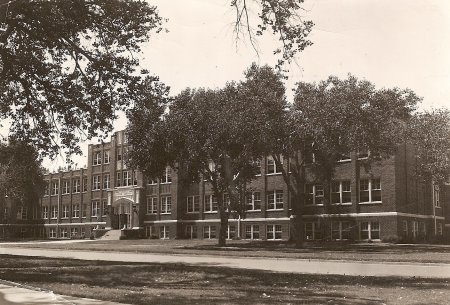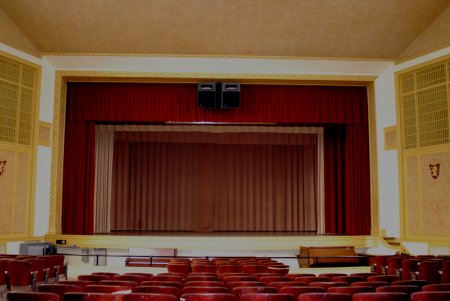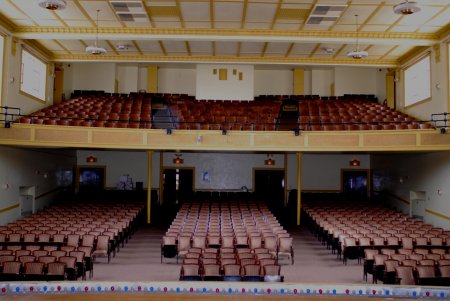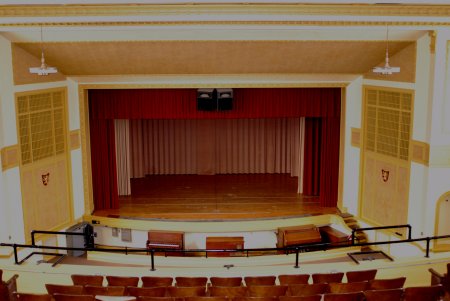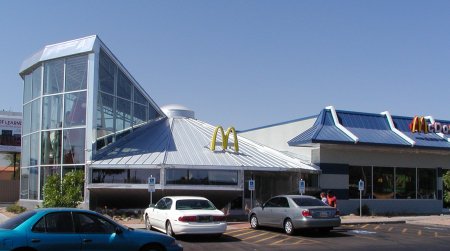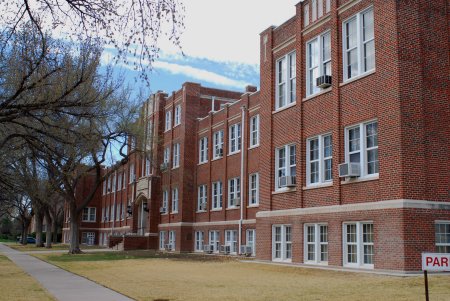 |
North Junior High School The City of Roswell, in southeast New Mexico began as a crossroads where several springs provided cattle herds with water. Cattle Baron John Chisum and his cattle were, in large part, responsible for sustaining a good part of Roswell’s early economy since the Chisum Trail began near Roswell and was used by cowboys driving longhorn cattle to the railhead at Las Cruces. In 1869 Roswell began to take shape with the arrival of Van C. Smith, a professional gambler. Mr. Smith filed his claim in the spring of 1871, and changed the settlement’s name to honor his father, Roswell Smith.1
In 1890, a vast artesian water supply was discovered beneath Roswell and ditches were dug to divert the water into vegetable fields. In 1891 the town of Roswell was incorporated and the Roswell Dispatch, now known as the Roswell Daily Record, began its long history of providing the news to the Roswell area. 1891 also saw the establishment of the Goss Military Institute, later known as the New Mexico Military Institute. Roswell continued to prosper and during the depression economic growth was maintained with the help of WPA projects which strengthened the community and planted seeds for cultural growth. In 1929 the Central School at 300 N. Kentucky Avenue was razed and North Junior High School, a deco brick style building, was constructed at that location.1
One of humanity's earliest steps toward space travel began in Roswell, New Mexico, where Dr. Robert H. Goddard, born in Worcester, Massachusetts, and considered the father of modern rocket propulsion, refined his liquid fuel technology. Dr. Goddard set up an experimental station in Roswell where throughout the 1930s, he created the basis of modern rocketry, including gyroscopic directional controls, exhaust-deflection steering, rapid-combustion fuels, and power-driven fuel pumps. In World War II, Goddard worked for the Navy; but ironically, the Germans took his work more seriously, and so benefited more from it than the U.S. As an inventor and visionary, he, more than anyone else, paved the way for the space age.2
During WW II, Camp Roswell also contained a large prisoner-of-war camp at Orchard Park, housing 4800 German and Italian prisoners. The prisoners were used as construction laborers on local projects and built many of Roswell's parks. After WWII, Roswell Army Air Field became the home of the only atomic warfare group, the 509th Composite Bomb Group, which became the core of the newly created Strategic Air Command. The "Enola Gay" B-29 bomber was part of that group and stationed there. When the Army and Air Force became separate entities in 1948, the name of the base was changed to Walker Air Force Base.
In July of 1947 a mysterious crash occurred on a ranch about 75 miles northwest of the city, on a ranch near Corona that would later become known as "The Roswell Incident." The crash when reported to the local authorities was initially investigated by Major Jesse Marcel, an Army intelligence office assigned to the 509th at Roswell. After collecting and preliminarily analyzing debris from the site, a press release was put out by the Roswell Air Force Base's Public Information Officer that it was the wreckage of a crashed "disk". It was published in the Roswell Daily Record and broadcast on several radio stations (Click Here to listen to original Roswell Crash Radio Broadcast).
Hours later, the press release was retracted, and a new one released, stating it was a weather balloon that they mistakenly identified as a flying saucer. The military tried hard to convince the local news that it was nothing other than a weather balloon and a big mistake by their department to say otherwise. The debris was collected and moved to Fort Worth and then Wright-Patterson AFB in Ohio. Local citizens who witnessed the crash remained hush-hush about the doings until they retired. Major Marcel later said the weather balloon was not part of the debris he found, but was substituted by the military for the photographs taken days after the incident. The incident was literally forgotten for many years.
In 1953 he also performed for troops in Japan and Korea with Ernest Tubb and the following year, in 1954, he formed a Nashville-based booking agency, Hank Snow Enterprises-Jamboree Productions, with Colonel Parker. Hank was also the one that introduced Elvis, Scotty and Bill at their one and only appearance at the Opry in 1954. In 1955, Hank became the first guitarist to record an instrumental album with Chet Atkins.3 Their only performances at Roswell were the first of many that Elvis, Scotty and Bill would perform with Hank's Jamboree and according to Scotty, the audiences, one by one, began to show a vociferous preference for Elvis.4
Hank may have been the star but it was the youngster from Memphis who made the crowds scream for more. "I felt sorry for Hank," said Scotty. "It didn't matter whether Elvis was on first or last, the reaction was always the same." 4 Scotty said one night Hank was trying to do his song “Movin’ On”, which had been a huge hit, and the girls kept screaming. Hank stopped the band, stepped up to the mic, and announced, “If you’ll let me finish my song, the little bastard will be out to sing for you!” Then he proceeded to finish “Movin’ On” and introduced Elvis.
Bob Neal noticed that audience reaction depended on whether they were within range of KWKH in Shreveport. "In towns where he'd had radio exposure, it was a frenzied type of reaction," Scotty said. "The girls were screaming, jumping up and down and passing out. The reaction was negative with the boys. A great many resented it." 4
North Junior High School was renamed Pueblo Junior High School in 1963. During the 1960s, the Federal government built Atlas missile sites and Nike missile installations within a twenty-five mile radius of the Air Force base, which were only operational for a few years. Walker Air Force Base was closed in 1967 and was converted into the Roswell International Air Center.
With the closing of the base in Roswell the population decreased by 50 percent. Years later, when the witnesses to the crash in 1947 came out with their story, Roswell got the attention of the world who immediately wanted to know more about the incident. With the help of the government and their denials about the “Roswell Incident,” Roswell has now become a Mecca for people wanting to know more. The result has been thousands of people visiting annually and a new multi-million dollar tourism industry. Seven new hotels, with more on the way, and many new restaurants have sprung up to answer this burgeoning call. Even McDonald’s has gotten into the mix by building their seventh worldwide theme park restaurant there, designed to look like a spaceship residing on Main Street.5
Today, the building that was originally North Junior High School at 300 N. Kentucky Avenue is now the Administration and Services Complex for the Roswell Independent School District. Aside from new windows, not a lot has changed visually about the building and its auditorium since Elvis, Scotty and Bill performed their in 1955. To date, we've yet to see any photos from their performance there but a story in the Roswell Daily record on February 17, 2005 detailed Ernst Jorgensen's quest for stories and photos. Hopefully he's been fruitful and we'll someday see some in a future publication. page added
March 3, 2008 1
excerpt courtesy
The Roswell Community World Wide Web Site Special thanks to Danny Boswell of the Roswell Independent School District and to Elvis E. Fleming of the Historical Society for Southeast New Mexico for their assistance with photographs. Advertisement for Feb 14, 1955 is courtesy Elvis Presley in Concert.
|
|
All photos on this site (that we didn't borrow) unless otherwise indicated are the property of either Scotty Moore or James V. Roy and unauthorized use or reproduction is prohibited. |
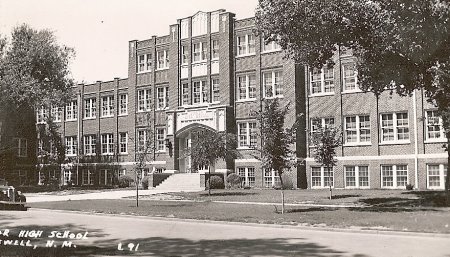
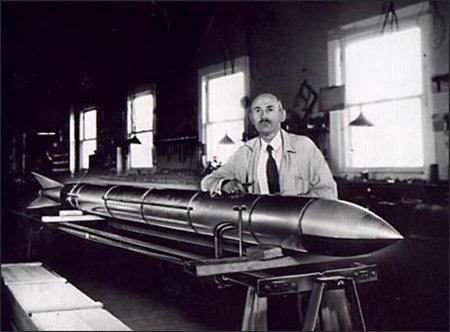
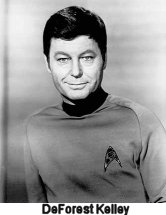 Military presence
at Roswell began with the installation of a military flying school in
1940,
which later became the Roswell Army Air Field. One of the
servicemen assigned to the 91st Airbase Squadron at Roswell as a Control
tower operator from 1943 to 1945 was DeForest Kelley. He would
later become a famous actor and eventually star as Dr. Bones McCoy in
Star Trek the television series and movies.
Military presence
at Roswell began with the installation of a military flying school in
1940,
which later became the Roswell Army Air Field. One of the
servicemen assigned to the 91st Airbase Squadron at Roswell as a Control
tower operator from 1943 to 1945 was DeForest Kelley. He would
later become a famous actor and eventually star as Dr. Bones McCoy in
Star Trek the television series and movies.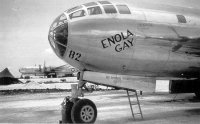
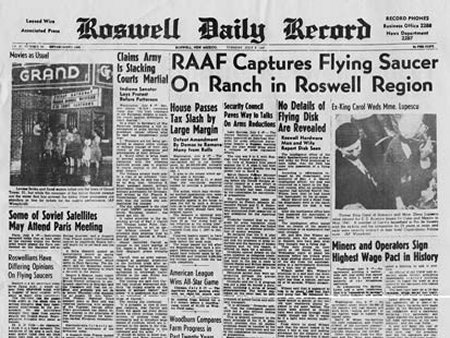
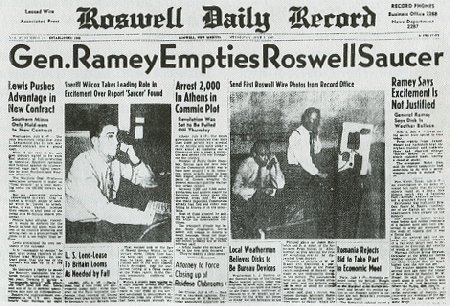
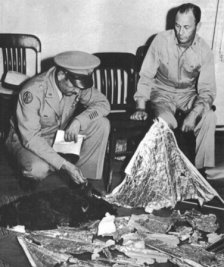


 On February 14, 1955, after performing in
On February 14, 1955, after performing in 